Good morning from Naxos~! Recap of Athens Day 3
The Agora and the National Archeological Museum. Welcome to the Cyclades~!
We awoke this morning amidst the magical islands of the Cyclades. The brilliant Mediterranean sun in the east and the waning gibbous moon the only objects in the cloudless blue sky. It is no accident that the Greek flag is blue.
Blue dominates, from the sky to the sea, in all its many shades and hues.
The temperatures here are a big relief from the city heat of Athens, the continuous breeze refreshing and yet warm.
Our room opens to the west, with a view across the water to the island of Paros, a few miles to the west. Here the Aegean is a dark blue, decorated with white caps and the sails of a few charter boats from the Naxos harbor a short walk to the north.
We arrived here by ferry from Piraeus, Athens main port since antiquity. Ferries connect this country and its many islands. I enjoyed observing the hustle and bustle of the ferry docks through the eyes of some of my teenage grandchildren, as they watched, for the first time, the many ships loading their cargos of people, autos and cargo. (Opening Photo).
We have three days now to explore Naxos and its environs. It won’t be hard to find things to do! But now I need to catch you up on our last full day in Athens.
The Greek capital demands three days at a minimum, and four is better, especially if it’s your first day in Europe. It’s an energetic place, even in the summer when many residents have fled the heat of the city for the beaches and islands.
We began our third day with a walking tour of the Ancient Agora, just north of the Acropolis. It was here where Plato (c. 428 - 348 BCE) wandered, asking questions, seeking the truth. And soon thereafter here Zeno of Citium (c. 334 - 262 BCE, considered the founder of Stoicism, a philosophy of which I am a proponent, founded his school.
The Agora had shops, temples, courts of law, and everything a city needs, as well as a council house where the rulers of the day slept and worked. “I am the boundary of the Agora,” is carved on the stones which mark off the Agora from the residential district.
The newspapers of the day were posted on wooden tablets. Each tribe had their own notice board where news of births, deaths, and other information kept the various tribes updated on the latest happenings. I described the Demes, the Three Zones (City, Coastal and Middleland (Mainland), and the formation of Demes from each of the three zones into Tribes in an earlier post, Athens: the Cradle of Democracy, but it was much easier to understand here in the Agora.
We enjoyed the shade of an olive tree as our guide explained. Each Tribe had their own statue. The year was divided into 10 months of 35 days. Every month a different Tribe would govern. Each Tribe sent fifth representatives to the Council. The Council would prepare drafts of proposed legislation, which would then be voted on by all citizens. Each day one of the 50 members of the Tribe who ruled that month would serve as the Prime Minister of the Day, and each day 17 of the 50 would serve as Judges.
This was the first democratic government in the world. People (demos) Power (Kracie) = Democracy.
A beautiful two story Stoa has been reconstructed of marble along the North side of the Agora, and shelters some of the great sculptures and architectural exemplars from the era. CC. It is well worth the price of admission, especially if you have a knowledgeable guide. In some places the original stones were used, adding authenticity to the beautiful structure. If you want something to last for thousands of years, build in stone!
The Holocaust Memorial lies near the ancient cemetery just northwest of the Agora. Photo Credit Jen Myers-Zoll.
After lunch (there are so many options, and so many good restaurants, that there is no need to make recommendations), we headed to the Archeological Museum. Though the Acropolis is the Crown of Athens, the jewels of Ancient Greece are housed in this fantastic museum.
We only had 2 hours, but still managed to see many of the highlights. Our tour began with the Cycladic Period.
The earliest figures were female figurines that were found in graves. Indeed almost all of the Cycladic art works are grave goods, items left in the grave to accompany the deceased on their journey in the underworld. (CC).
Some remarkable clay tablets which used Linear B script were preserved that help us understand that early Greek writing system.
The museum houses the incredible gold treasures uncovered by Henry Schliemann, including the gold “Mask of Agamemnon,” above. (CC) Schliemann uncovered 15 kilos of gold from these Archaic Era tombs, fashioned into death masks, rings, bracelets, necklaces, and breastplates, all grave goods from the Tumulus tombs he explored.
The influence of Egypt can be seen in the early Archaic sculptures, with slanted eyes and rigidly braided hair. As you study the various Korai (sculptures of maidens) through one hallway in particular you can see the evolution of art, from the rigid archaic to the early Classic that is the hallmark of Greek art after 500 BCE. The photo above is of Aphrodite, the first depiction of a nude female to this point. While the men were depicted in the nude, women, til now, were clothed.
The iconic bronze statue of either Zeus or Poseidon was found on the sea floor and thus preserved. (I think that it’s Poseidon).
And the incredible bronze statue of the horse and rider is known around the world.
The museum also houses the Antikythera Mechanism, the world’s first computer. Here’s a link to YouTube video by BBC that explains this remarkable mechanism, also found in the sea, dating from the 1st century BCE.
A Roman statuette of Athena, dating to the 3rd century CE, was found in Athens. It is a copy of the actual statue of Athena in the Parthenon.
The museum contains many wonderful examples of funerary art, which are at least equal to those found in Rome’s museum. (See, A Rainy Day in Rome).
The final highlight of our visit was to the upper floor, dedicated to artifacts found in the excavation of Akrotiri, a village on Thera (Santorini) that was preserved after a volcanic eruption, similar to that of Vesuvius whose eruption buried Pompeii in 79 C.E.
Akrotiri was a Cycladic Bronze Age settlement on the volcanic Greek Island of Santorini (aka Thera), founded about 5000-4001 BCE. It was covered by volcanic ash in the Minoan eruption of c. 1600 BCE, one of the largest volcanic events in human history. The ash preserved a snapshot of life in the Bronze Age.
I’ve shot a video of the frescos which I’ll share once we get it up. There are three frescoes I particularly like: The Spring, the Antelope and the Boxers. I love the freedom of these ancient artists, unrestrained by convention.
Yesterday as we crossed the Aegean, speckled with islands, I wondered how many other human civilizations had been here, the remains now lying beneath the sea. These islands are the tops of mountains which dominated a fertile coastal plain that stretched from the Dardanelles to Crete.
The blue is calling me to explore Naxos. The teens are already on the beach. Signing off for today, thanks so much for traveling along and for the shares and likes~!







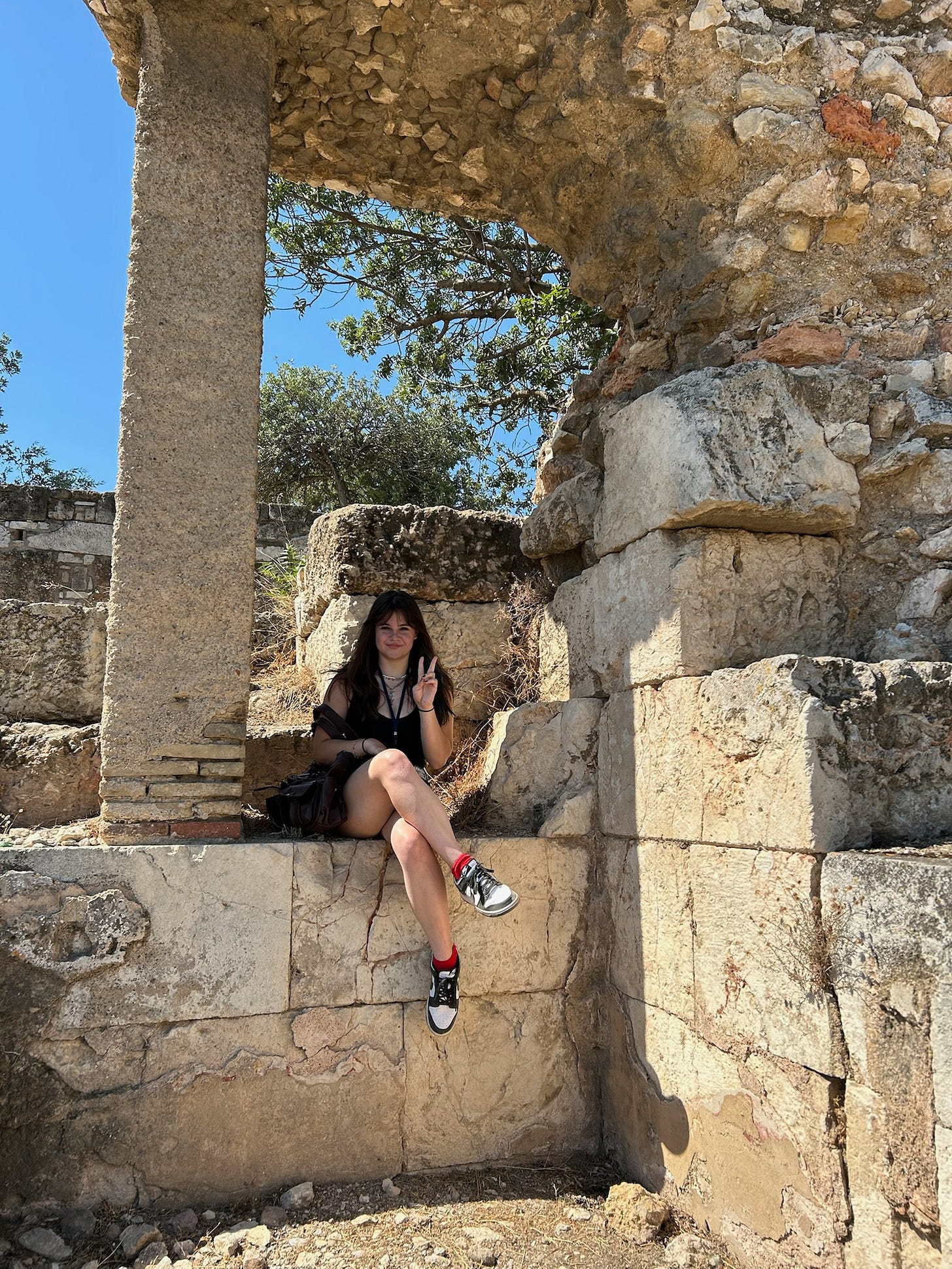



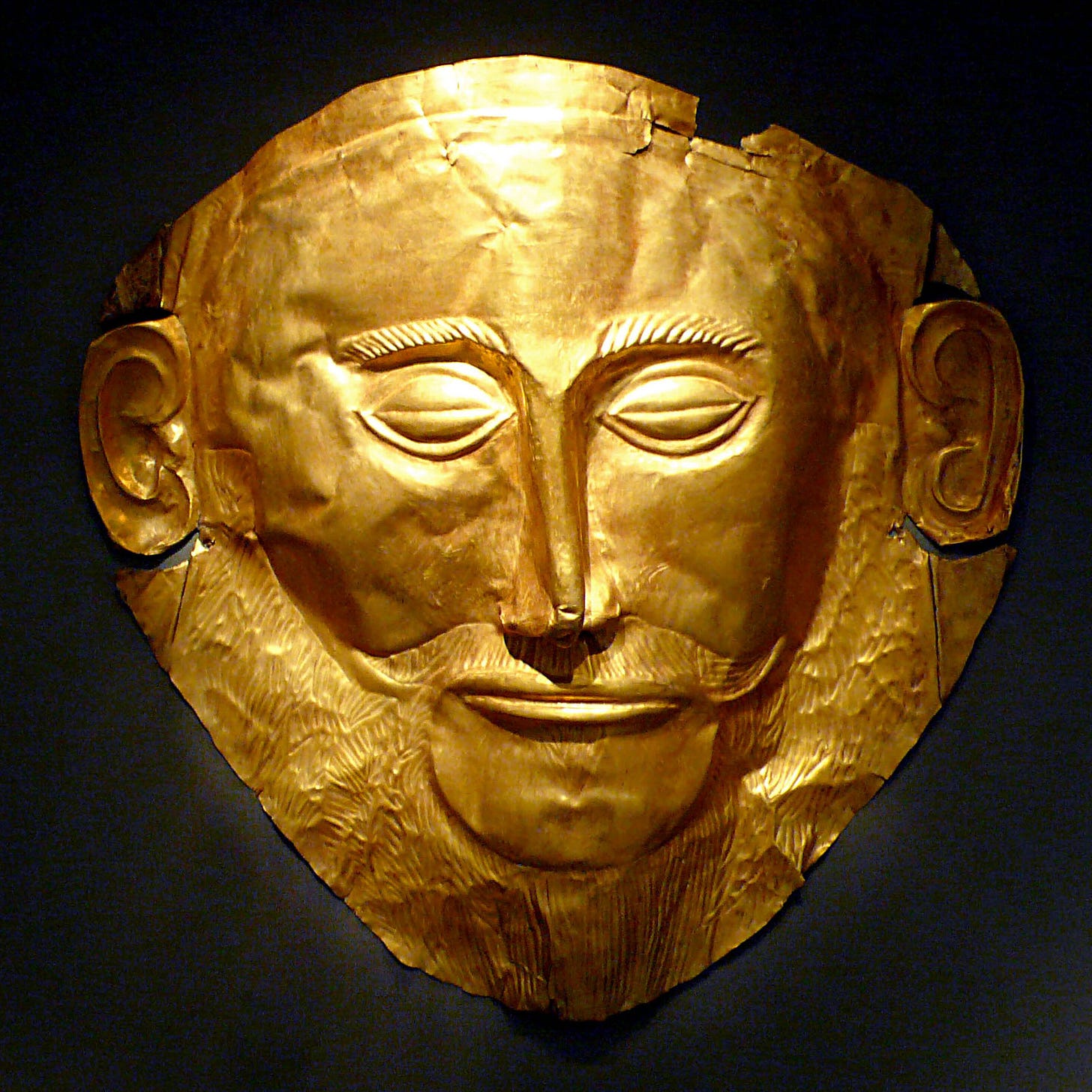
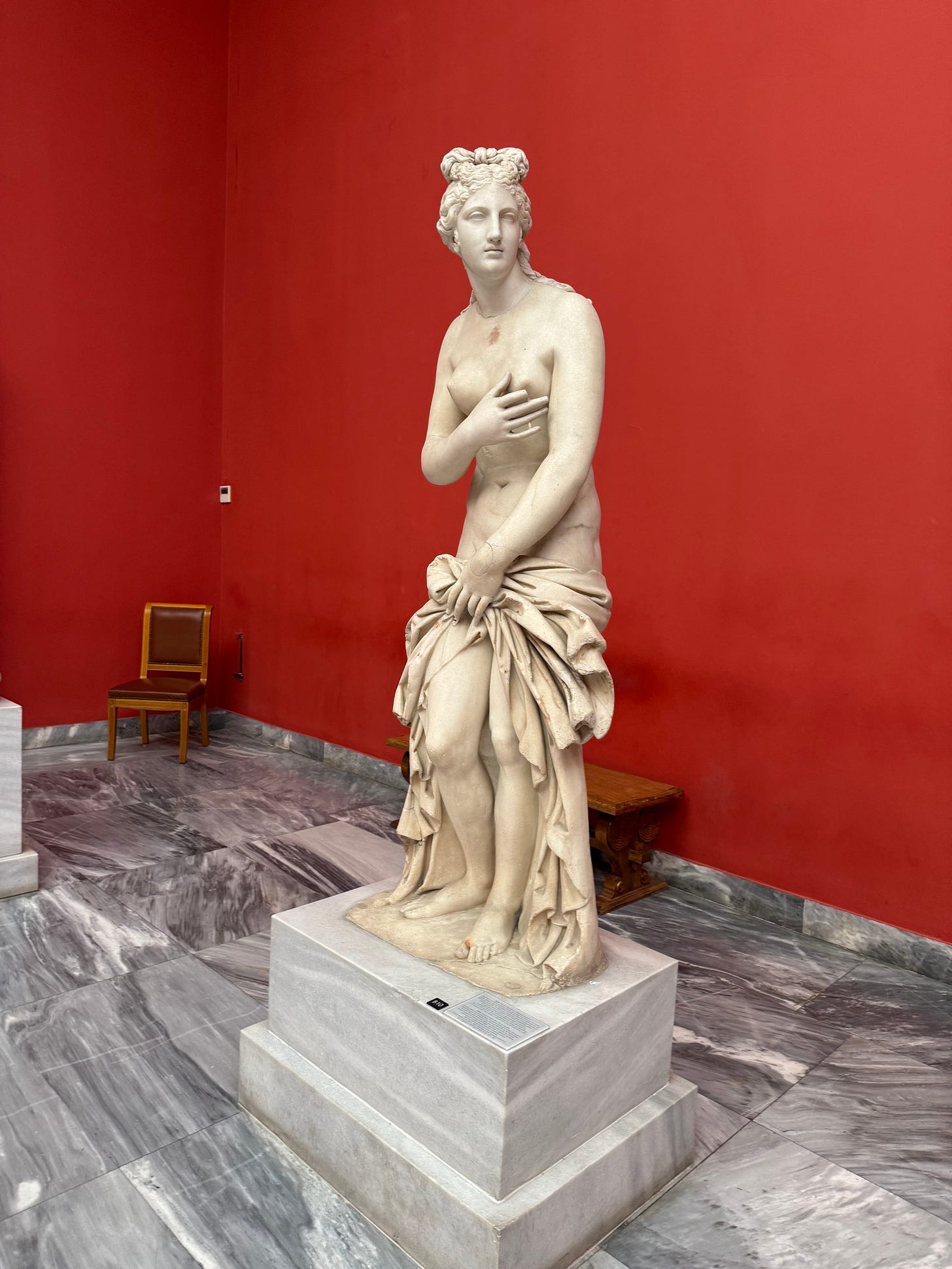

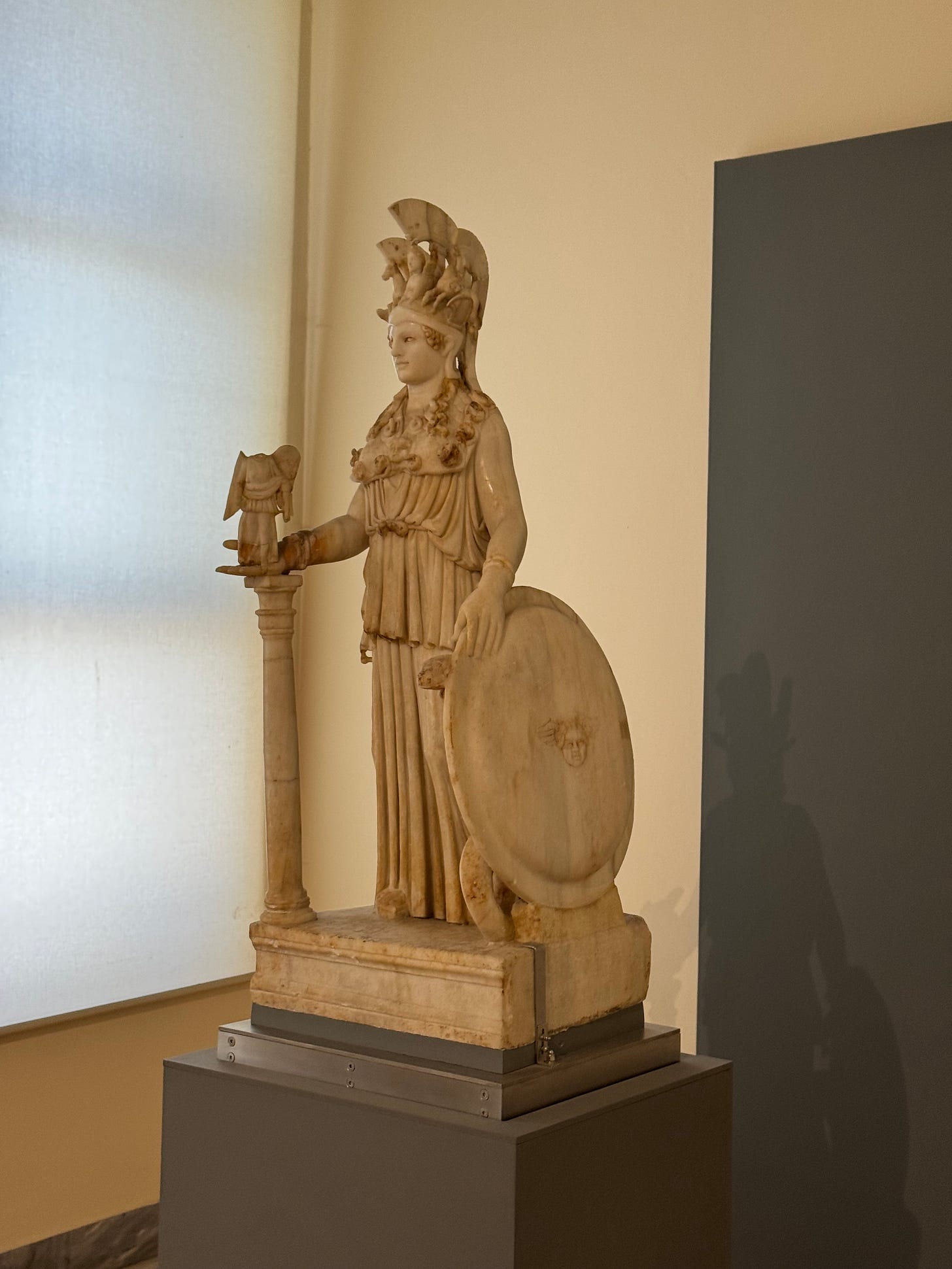
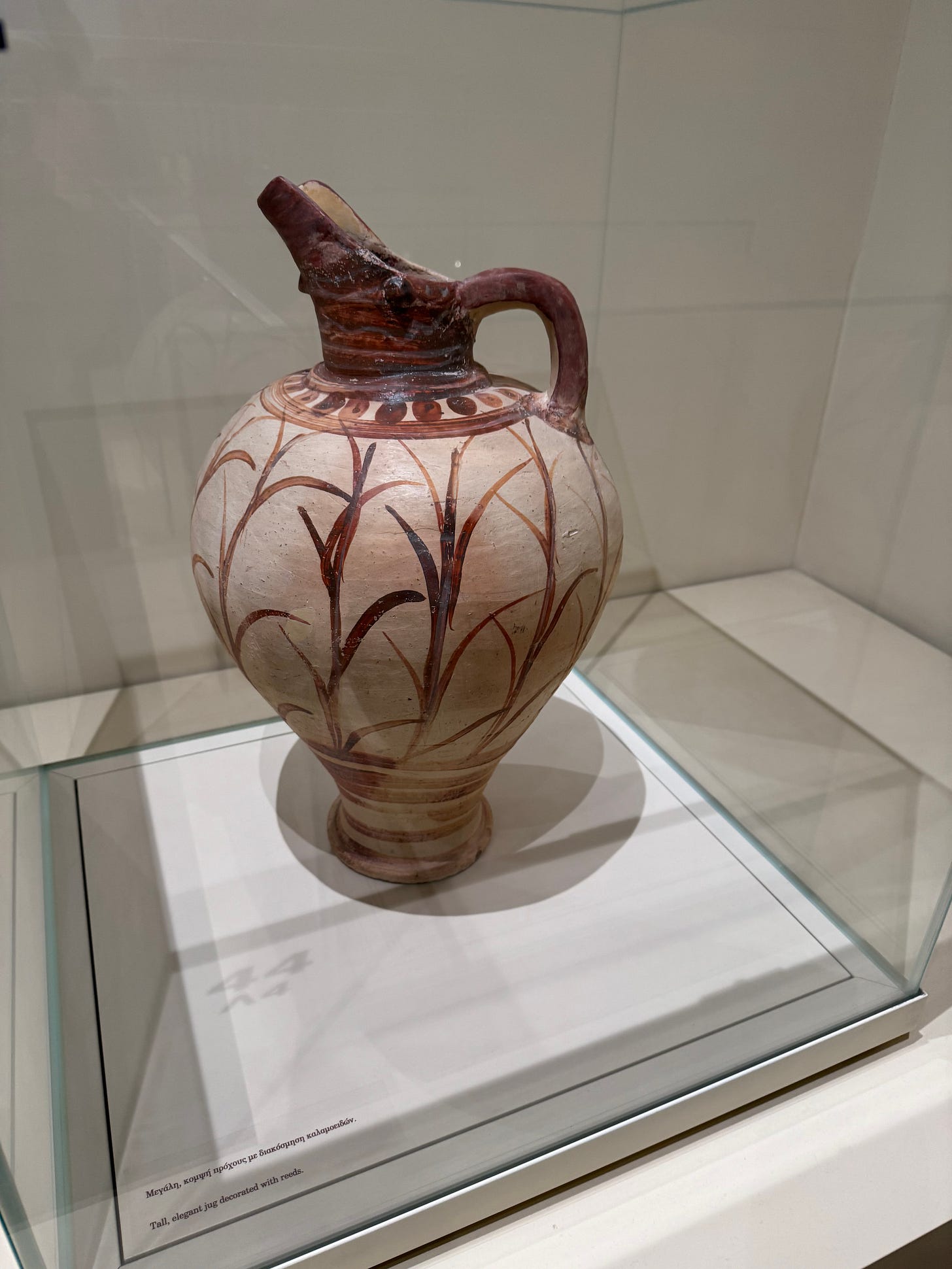


Amazing! From ancient ruins, beautiful scenery, family fun, to stunning historical works of art! What a fabulous vacation, David. Greece has it all! You certainly made some happy memories to cherish and it was a pleasure to read about your trip. Thank you for sharing.
Those look happy grandkids. Not bored and restless at all. Well brought up. A lot of those ancient faces have such impassive,inscrutable and impenetrable expressions. They're not going to tell us WHAT THEY KNOW! There is a bit in Joanna Lumleys Greek Odyssey in which see tells of something she wrote at more length in one of her autobiographies. (In case you don't know of Joanna Lumley she is a divine Goddess,was a model,actress, + activist,was ALREADY FAMOUS before Patsy and all round Good Sport, and English Rose.)She and her friends in the early 60s,all broke saved up to stay for two months or so at a Greek Island they were told was wonderful. They got to the island by ferry and had a wonderful time,just living in the sun,going to the market every day,buying fish fresh in at the harbour. They had no money so were all on a shoestring budget. Towards the end of their time Joanna had to take a call from that friend. Asked how they were enjoying the place it became clear they were talking about two different places. I think one island was called Paros,and one Poras,and they had booked the wrong one!.But having spent a summer there they all loved the place and were happy they made the mistake!